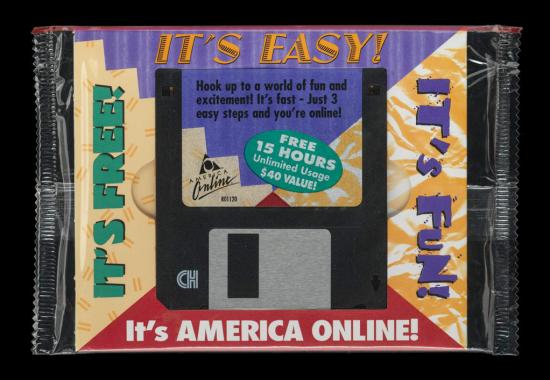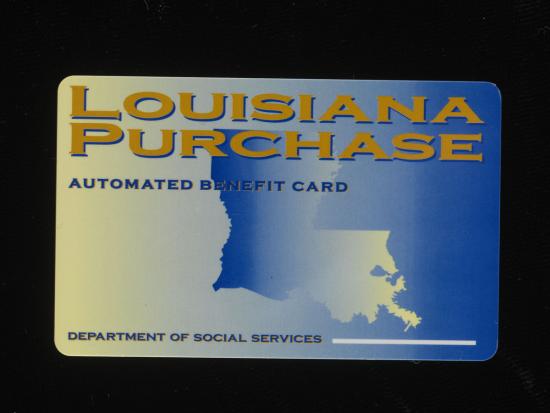Thinking of going off the grid? Think again–The Internet is everywhere.
On June 11, The American History Museum will present America Now, a nationwide celebration of America’s innovative spirit. As part of the day’s festivities, the museum has partnered with The Internet Society to host a Global Innovation Summit examining the people and events that led to the creation of the Internet. In a world where almost 90 percent of American adults report that they use the Internet, and nearly two-thirds of Americans own a smartphone, it’s easy to forget how much the Internet has affected our daily lives. Here are six objects that illustrate the surprising ubiquity of the Internet. All will be on display beginning July 1 when the American Enterprise exhibition opens in the Mars Hall of American Business.
Global Positioning System
Created and maintained by the U.S government, the Global Positioning System does more than give you directions in your car; it helps put food on your table. Beginning in 2004, farmer Roy Bardole used this GPS guidance device on his farming equipment in Rippey, Iowa. Moving the control unit between his tractor, sprayer, and combine allowed Roy to maintain straighter lines in the field than he could by eye—an important part of a no-till operation. The guidance device could also control the amount of seed, fertilizer, and chemicals Roy applied to his fields, reducing overspraying and overseeding. At harvest, the device recorded amounts for specific field locations, creating highly accurate crop-yield maps. Like many other farmers, Bardole used this data to better understand how his fields worked, to get an edge on nature, and to improve his farming practice.
2. Federal Express Super Tracker
Do you shop online? E-commerce depends upon companies that can quickly and efficiently deliver goods to your door. In 1971, Frederick Smith raised about $91 million in venture capital to develop his idea of an overnight package delivery service, Federal Express. Although the company struggled at first, it eventually became a success, and in 1986 Federal Express introduced the SuperTracker, allowing workers to capture item-level information on packages as they moved from pickup to destination. This SuperTracker handheld document scanner related barcodes on packages to delivery information and transmitted it by radio back to the company’s central computers.
3. Ankle Bracelet
In the 1980s, the high cost of building and maintaining prisons motivated a search for alternatives. One approach adopted by state and local governments for certain offenders entailed home confinement monitored by an electronic device. Authorities monitored the location of prisoners by equipping them with GPS devices and small radio transmitters. This particular ankle bracelet communicated with a control box. If the wearer moved out of range of the box without authorization, a message would have been dispatched to local law enforcement authorities.
4. America Online software
In the age of the smartphone, it’s difficult to imagine that companies once struggled to convince customers that the Internet and e-mail were worth a try. In the 1990s, America Online (AOL), an Internet provider, sent out millions of promotional software disks like this to attract new customers in what became one of the largest and most aggressive direct-mail campaigns ever. The disks contained the software needed to use AOL, and provided hours of free service. This 3.5-inch floppy disk was in use around 1995, and included 15 hours of free AOL access. As AOL users swelled to around 8 million by 1996, AOL disks became ubiquitous in America’s mailboxes, and the log-on greeting of “You’ve Got Mail” permeated pop culture.
5. Electronic Benefit Card
The Internet has changed everyday financial transactions in ways that go beyond Christmas shopping. For example, beginning in the 1990s, states began replacing federal government food stamps (paper coupons distributed in booklets) with electronic benefit cards. These cards were easier and more efficient for users, and they were also designed to reduce fraud and abuse and to regulate what users could buy. This particular Electronic Benefit Transfer (EBT) card, issued by the State of Louisiana, allowed people eligible for the Supplemental Nutrition Assistance Program (SNAP) benefits or Temporary Assistance for Needy Families (TANF) benefits to pay for food electronically.
6. Bloomberg keyboard
Internet access has opened financial markets to both work-from-home day traders and high-speed machines. Until recently, many traders did their work using specialized hardware like this Bloomberg terminal. After he was laid off by a Wall Street investment bank in 1981, Michael Bloomberg took his severance package and opened a specialized information company for the financial industry. The company, Innovative Market Systems (IMS), developed a computer terminal that provided access to real-time market data, analytics, and news. The computer terminal required a subscription service to Bloomberg data, and it came with dedicated hardware and a customized keyboard. In 1986, IMS was renamed Bloomberg L.P., and by 1988 the terminal could buy and sell stocks and bonds via the electronic trading system.
The Bloomberg keyboard is similar to other QWERTY keyboards in its layout, but it replaces many of the generic function keys with finance-specific hotkeys that can access real-time security options for a variety of sectors. There are also specific keys for calling up quotes, and selling or buying stocks and bonds. The keyboard is color-coded in red, green, and yellow to help traders quickly identify the keys they need. This Bloomberg keyboard was used by Bill Gross, one of the most successful financial managers of the early 2000s, in his work at Pacific Investment Management. This photograph shows how Gross decorated his desk at work.
This post by Jordan Grant, a New Media assistant working with the American Enterprise exhibition was originally published by the American History Museum’s blog, “O Say Can You See?”
Posted: 8 June 2015
-
Categories:
American History Museum , Feature Stories , History and Culture









